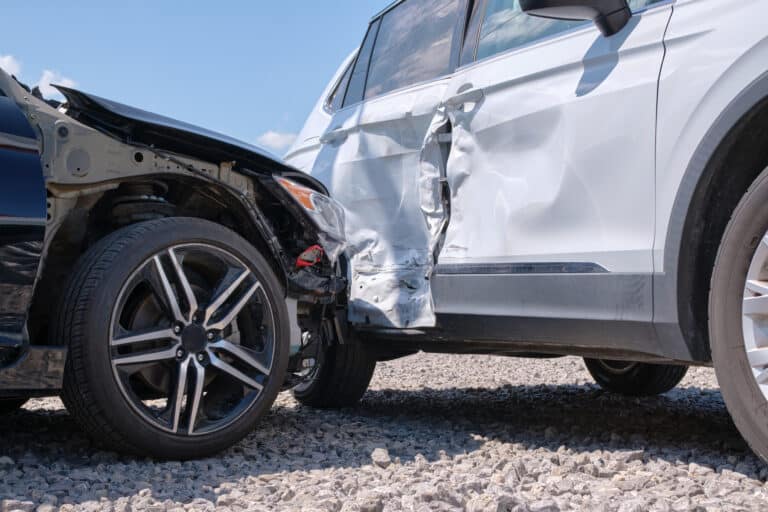While lawyers have conducted depositions remotely for some time, it was often at the option of the parties and limited in use to the tech-savvy. Now, shelter-in-place orders and fear of exposure to COVID-19 have forced all litigators—tech-savvy and luddite alike—into learning about remote deposition platforms, their capabilities, and their limitations. So, what is it that we should all know and consider before setting the date for our next remote deposition?
The Law of Remote Depositions
 First and foremost, lawyers need to research what they are allowed to do remotely. For many states that have adopted rules of procedure similar to the federal rules, like Colorado, Rule 30 states that the deposition is “taken” in the place where the deponent answers questions. This means that, if the lawyers are located in Colorado but the deponent is located in Idaho, the lawyers need to find out if Idaho allows remote depositions and remote oath administration.
First and foremost, lawyers need to research what they are allowed to do remotely. For many states that have adopted rules of procedure similar to the federal rules, like Colorado, Rule 30 states that the deposition is “taken” in the place where the deponent answers questions. This means that, if the lawyers are located in Colorado but the deponent is located in Idaho, the lawyers need to find out if Idaho allows remote depositions and remote oath administration.
As fortune would have it, Colorado allows the parties to stipulate to remote depositions, as well as remote oath administration. (See C.R.C.P. 30(b)(7), Executive Order D 2020 019, and Secretary of State temporary adoption of 8 CCR 1505-11.) However, lawyers need to check the state rules of civil procedure, notary rules, and/or executive orders in any state in which a deponent sits answering questions.
The Platforms for Remote Depositions
Remote deposition platforms come in many sizes and shapes; the one a lawyer chooses depends on the needs of the deposition. Here are things to consider in researching and choosing a platform:
- What technology do your lawyers and deponent have available where they are sheltering in place, including wireless network speeds (i.e. tablet, laptop, desktop, camera, built-in mic, phone)?
- Is your deponent savvy enough to work his or her way through a more robust deposition platform?
- Do you want to provide copies of exhibits to deponents and opposing counsel or the court reporter ahead of time—electronically or by shipping paper copies?
- Do you prefer the ability to show and mark exhibits in real time?
- Do you need your deponent to have the ability to markup exhibits during the deposition (i.e. underline, highlight, point)?
- Do you need your deponent to be able to draw something on a blank “document?”
- Do you need or want RealTime feed during the depositions?
- Do you want a videographer to be able to tap into the feed?
- Do you need the videographer to capture simultaneously the deponent and the exhibit to which they are referring (i.e. so your jury can see what the deponent is pointing to)?
- Do you need the assistance of the vendor to run the technology?
Some platforms include many of these features at no additional cost; some features are offered free of charge during the continued shelter-in-place orders; and others represent add-on fees to traditional court reporter and videographer fees. And regardless of the platform, lawyers need to inquire into security measures employed by the vendor to ensure no “Zoom-bombing” or similar hack can occur.
Lawyers must decide what makes sense in light of the type of case, value of the case, resources of the client, comfort level of the lawyer, and information needed from any given deponent.
The Practice of Taking Depositions
Lawyers need to recognize that the practice of taking remote depositions is not going to mirror face-to-face depositions in all respects, but there are tips and tricks to consider in order for them to run as smoothly as possible.
- Expect and plan for delays. Regardless of how much advance planning and testing a lawyer does, technology still fails, particularly when you have multiple people attending from multiple locations, all with different wired or wireless capabilities. Make sure you give yourself enough time to get set up and to complete the deposition, especially if you or your deponent has a hard-stop time.
- Test the technology! A day or two in advance, ensure you and your witness test the technology. This includes testing for any delay in the feed. Allow the witness to manipulate an exhibit so s/he knows how the system works. Check the background to ensure there is nothing distracting or offensive behind the witness. Consider whether your witness can lock the door to the room s/he is in to avoid unexpected visitors in the middle of a deposition. Check the lighting to avoid “halos” behind your witness; best practice is to have lighting coming from the front of your witness. Make sure the video angle captures the witness’ torso head on, as opposed to angling up at the witness’ chin. Ensure your witness has a comfortable chair s/he can sit in for the duration of the deposition. And answer any questions or concerns your witness may have so s/he does not experience any more anxiety than is expected due to the added technological barrier.
- Put all stipulations on the record. Many lawyers are filing stipulations with the court in advance of depositions and/or including them in the deposition notices. Putting the stipulations on the record at the beginning of the deposition ensures all parties are on the same page. Include the applicable rules of civil procedure or executive orders that permit remote appearances and administration of the oath.
- Confirm attendees. At the beginning of the deposition, ask who is present on the phone line or through the platform that may not be visible. Also confirm with the deponent that s/he is not communicating or receiving messages from anyone during the deposition.
- Be careful what you share. If you intend on sharing your screen for purposes of pulling up an exhibit, be aware of what is on your desktop. Take down any pictures you do not want recorded. Remove confidential files related to that or other cases. If you do not want the other side to see it, take it off your desktop in advance of the deposition.
- Remember you are on video. Just as with any other environment, we can forget our surroundings at times. While the participants may be hundreds of miles apart in different locations, remember that you are on video. If you do not need to be on video, consider turning it off. If you are not the objecting lawyer or do not anticipate frequent objections, consider muting your feed. If you are the deposing party, you may want to consider a dual screen to allow you to see and communicate with the deponent on one screen and review documents or notes on another screen. If you do not have dual screens, consider a laptop and a tablet. Finally, when on breaks, ensure the camera is off or covered and sound is off or muted so as to avoid sharing unintended scenes or information.
- Join audio through the phone. As mentioned above, technology can fail. Having all parties connect to audio through the phone ensures the deposition can move forward if all else fails. Connecting through the phone also avoids audio delay resulting from a slow WI-FI speed and avoids picking up as much ambient noise in the background.
- Ask if the deponent can see the document. As opposed to launching into our traditional authentication with “do you recognize this document,” lawyers should first ask if the deponent can see the document. Given the potential differences in participants’ network speeds, a document may show up on one person’s screen before another. Asking this simple question first reduces the delays inherent in remote depositions.
For many of us, remote depositions are a whole new world, but a necessary one in order to move cases forward in this unprecedented time. Remember the rules of professional conduct; remember the oath we took to become lawyers. Be cooperative and collaborative in this process, and remember—when nothing is working as it is supposed to, take a deep breath.








